That new paint and carpet smell in a home, school or building isn’t just annoying. It can actually be hazardous to your health. Many of the building materials we use every day emit chemicals during and after installation. This includes materials such as:
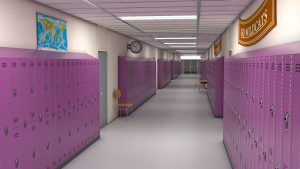
- Interior paints
- Interior adhesives and sealants
- Flooring and carpeting
- Manufactured wood products
- Furniture and upholstery
- Ceilings, walls, thermal and acoustic insulation
What these materials have in common is that they all contain Volatile Organic Compounds (VOCs). The most common contaminant of indoor air, VOCs are associated with a range of health effects, and can be a particular concern for children, seniors, and people with respiratory problems.
Selecting Low VOC and No VOC Products and Materials
The good news is that many low VOC and no VOC products are now widely available, making it easier for architects, designers and facilities managers to include low emitting products and materials in the design of their projects.
Selecting low emission products and materials not only improves human health and protects the environment, it can also help projects achieve LEED credits, an important consideration in today’s design and construction.
At Scranton Products, we believe in supporting a healthier environment. As a leading manufacturer of lockers, toilet partitions, and other HDPE (high density polyethylene) products, Scranton Products adheres to the highest standards, developing low emitting products that meet LEED requirements for air quality and sustainability, as well as GREENGUARD emissions standards.
Our products are free of VOC emissions, are eligible for LEED credits, and are GREENGUARD Gold Certified, meeting strict certification requirements for use in schools and healthcare facilities. In addition, all of our products are made from recycled materials and are 100% recyclable.
By selecting low emitting products made with Scranton Products HDPE, architects, designers and facilities managers can help to improve the indoor air quality of their projects while reducing environmental impact.
For more information on selecting Scranton Products low-emitting, sustainable products for your project, click on the link below.


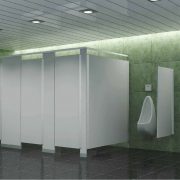
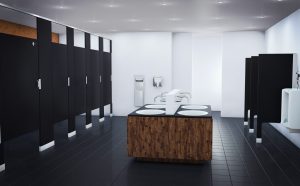 One of biggest and most costly issues that facility managers have to deal with is maintenance. Commercial facility restrooms usually require considerable maintenance, which leads to high costs and a significant amount of time and effort. Replacing partitions and meticulously scrubbing the floors and walls are no fun, so why not get ahead of the costly maintenance by using the right materials?
One of biggest and most costly issues that facility managers have to deal with is maintenance. Commercial facility restrooms usually require considerable maintenance, which leads to high costs and a significant amount of time and effort. Replacing partitions and meticulously scrubbing the floors and walls are no fun, so why not get ahead of the costly maintenance by using the right materials?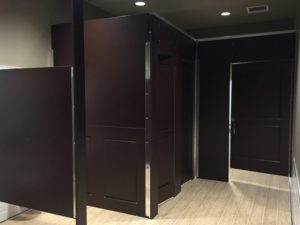 Having a stylish bathroom will certainly appeal to the occupants in your facility, adding an extra dose of comfort where most people feel vulnerable. Aria Partitions™ offer a sleek appearance. Aria Partitions™ are customizable and can be tailored to fit any design pattern or layout. They offer seven unique panel designs, 17 door designs, as well as 27 different colors and textures. You get to choose your preferred style to go with the theme and aesthetics of your new stylish restroom.
Having a stylish bathroom will certainly appeal to the occupants in your facility, adding an extra dose of comfort where most people feel vulnerable. Aria Partitions™ offer a sleek appearance. Aria Partitions™ are customizable and can be tailored to fit any design pattern or layout. They offer seven unique panel designs, 17 door designs, as well as 27 different colors and textures. You get to choose your preferred style to go with the theme and aesthetics of your new stylish restroom.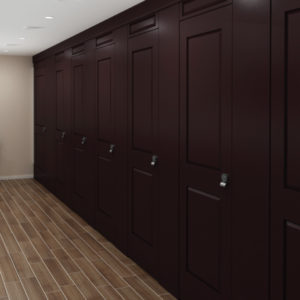 One of the best reasons to choose Aria Partitions™ for your restroom makeover is due to the low maintenance that these partitions require. Aria Partitions™ are made from HDPE (high-density polyethylene) solid plastic, which can withstand the humidity and moisture in your restroom. These two factors contribute heavily to the wear of standard partitions because they soak the inner paper core and sprout mold, which leads to foul odors and the possibility of negative health effects. Since HDPE is solid, there’s no paper core that’s susceptible to mold growth, meaning you don’t have to replace them.
One of the best reasons to choose Aria Partitions™ for your restroom makeover is due to the low maintenance that these partitions require. Aria Partitions™ are made from HDPE (high-density polyethylene) solid plastic, which can withstand the humidity and moisture in your restroom. These two factors contribute heavily to the wear of standard partitions because they soak the inner paper core and sprout mold, which leads to foul odors and the possibility of negative health effects. Since HDPE is solid, there’s no paper core that’s susceptible to mold growth, meaning you don’t have to replace them.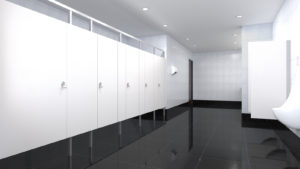
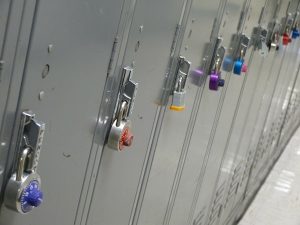 Lockers aren’t exactly treated gently. It seems a student’s preferred method of closing their lockers is by slamming them shut. Not only can this damage the door with nicks and dents, but it can also damage the hardware that keeps the door on the frame. Lockers endure a decent amount of wear over the years, so it’s important to routinely check the lockers to be sure that they’re in suitable shape.
Lockers aren’t exactly treated gently. It seems a student’s preferred method of closing their lockers is by slamming them shut. Not only can this damage the door with nicks and dents, but it can also damage the hardware that keeps the door on the frame. Lockers endure a decent amount of wear over the years, so it’s important to routinely check the lockers to be sure that they’re in suitable shape.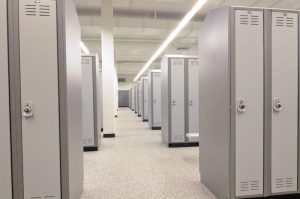 Usually, the final straw for knowing when it’s time to update your lockers is when your maintenance costs have reached an all-time high. Instead of enduring these costs, as well as the time spent on maintaining your lockers, you should seek out a more cost-effective solution. This can allow you to not only update your lockers, but you can use this time to utilize a better material that can withstand the elements that have worn down your current lockers.
Usually, the final straw for knowing when it’s time to update your lockers is when your maintenance costs have reached an all-time high. Instead of enduring these costs, as well as the time spent on maintaining your lockers, you should seek out a more cost-effective solution. This can allow you to not only update your lockers, but you can use this time to utilize a better material that can withstand the elements that have worn down your current lockers.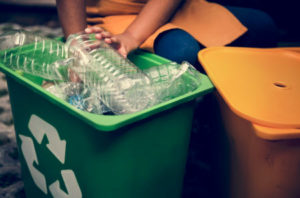 When recycled, HDPE is generally separated by grade since some HDPE plastic is thicker and more durable than others. All the plastic is rigorously cleaned to remove any particles or debris, so only the HDPE materials can be homogenized and processed. By removing any foreign debris and cleaning the plastic, HDPE is safe to continue with its recycling. Any particles left in will essentially ruin the end products.
When recycled, HDPE is generally separated by grade since some HDPE plastic is thicker and more durable than others. All the plastic is rigorously cleaned to remove any particles or debris, so only the HDPE materials can be homogenized and processed. By removing any foreign debris and cleaning the plastic, HDPE is safe to continue with its recycling. Any particles left in will essentially ruin the end products.